Space in art is all about the 3D area, in, and between objects. It’s what gives art some major depth and dimension, and it can seriously change the whole vibe and message of a piece.
The definition of space in art can be better understood by imagining you looking at artwork.
Whether it is life painting, geometric shapes, or organic shapes, your eyes could be drawn to the object in focus, but, the areas around the object are important as well.
Space in art expresses the distance between objects and their relationship to one another in a piece of art.
In this article, we’re diving deep into all things space in art—from perspective and composition to negative space and everything in between. Get ready to level up your art game.
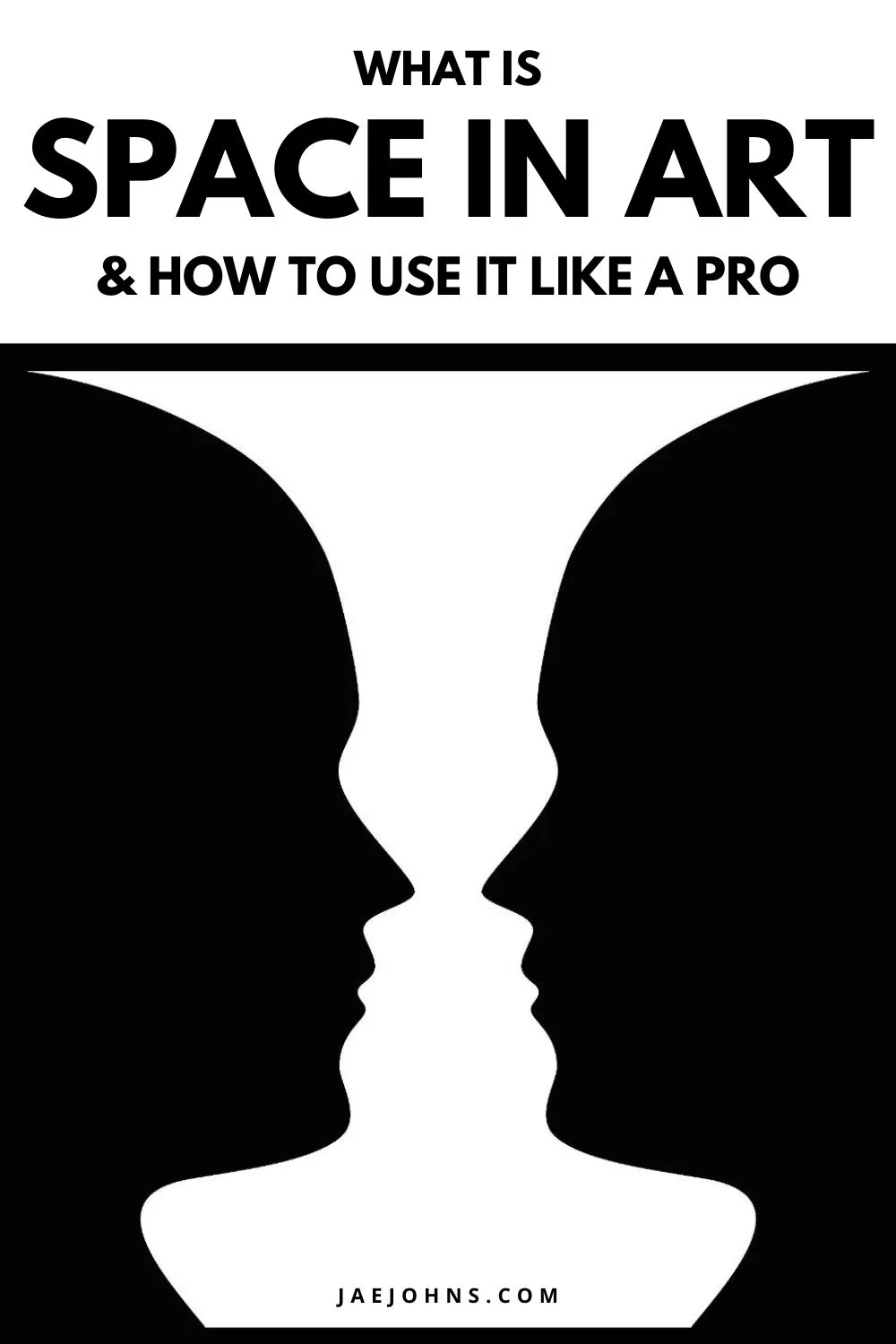
Understanding Perspective in Art
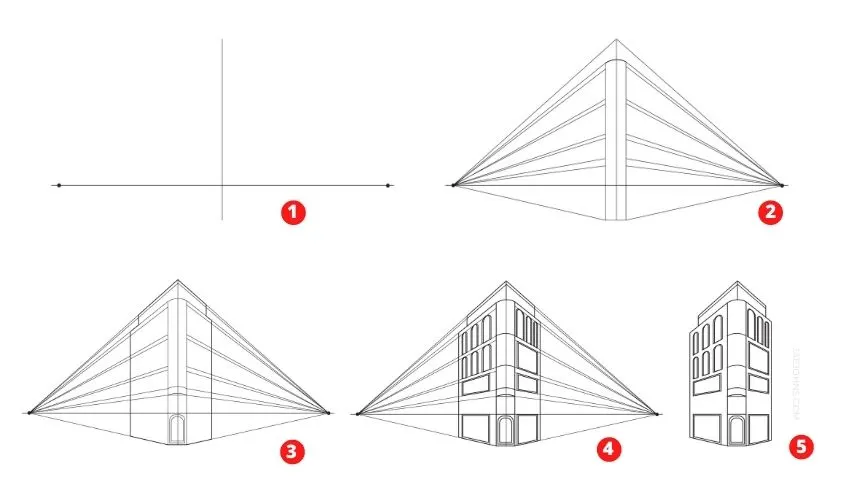
So, when it comes to creating some amazing art, perspective is like the OG of creating depth and distance on a flat surface, you know what I mean?
It’s all about creating a system of shapes and lines, that overlap and recede, making it look like the subject is in a 3D world.
These are the three main types of perspective that artists use.
One-point perspective is the basic one, where all the lines lead to a single vanishing point on the horizon. This is often used for architectural drawings and landscapes.
Two-point perspective is when an artist wants to step up their game and add more depth to their work.
This uses two vanishing points, creating a more complex composition like still lives, or cityscapes.
And then there is the three-point perspective, which is the big boy of them all.
This one is used to make compositions that are seriously dynamic, with three vanishing points, creating an insane amount of depth.
So, if you want to make some serious art, keep these types of perspective in mind, and experiment with them!
Composition in Art and the Use of Space
So, when you’re putting together, a piece of art, composition is like the glue that holds everything together.
It’s all about arranging the elements of your work, like color, shape, and texture—to create a harmonious and balanced piece.
One way to play with composition is to think about how you were using space in your work.
Negative space is the empty space around in between your subjects, and positive space is a subject occupied by your subjects.
By manipulating the balance of positive and negative space, you can create some seriously eye-catching compositions.
Another way to play with space is to think about the placement of your subjects.
You can use the rule of thirds, where you divide your canvas into thirds and place your subjects along those lines, or you can go against the green and place them in unexpected places to create some visual tension.
The Role of Space in Expressing Emotion
Do you know how you can really convey some intense emotions through your heart? That’s where space comes in, my friend. By controlling the way you use space in your work, you can create a mood that speaks louder than words.
Think about it. If you want to show a sense of tension.
You can make the space between your subjects, tight and cramped. But if you want to show a sense of calm and serenity, you can use negative space to create some breathing room.
It’s all about finding that sweet balance between positive and negative space.
And, you know, not just relying on the actual subject matter to convey your emotions. By using space in a deliberate way, you can make your audience. Feel exactly what you want them to feel.
What Exactly is Space in Art?
An empty area that surrounds or exists between, around, or within real or implied objects is known as space.
It is one of the important elements of art.
Space is equally important as color and form in art.
It can be found in every piece of art created.
According to a famous American architect and designer, Frank Lloyd Wright, space is considered to be the breath of art.
It means that whether it is painting, photography, architecture, sculpture, drawing, or sketching, space is present in each visual art!
There are various types of space such as inner space, outer space, pictorial space, or personal space. Artists use all these types of space in their artworks.
What Are All the Types of Space in Art
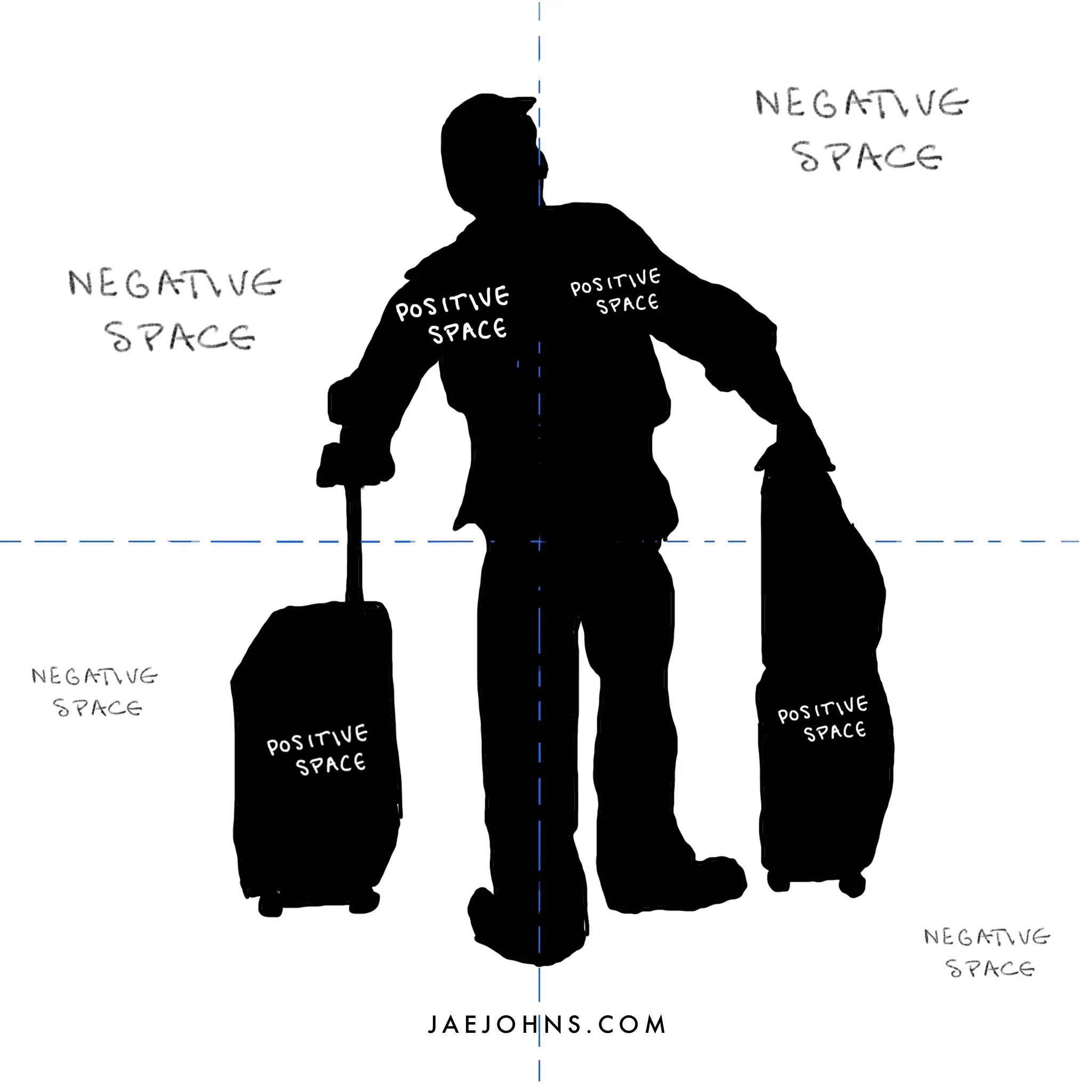
There are two main types of space in art, namely positive space, and negative space.
- Positive space
Positive space in art represents an area occupied by the main object in a piece of art.
Instances of positive space in art include the person in a portrait, the tables in abstract paintings, or the trees in a landscape painting.
- Negative space
Negative space in art refers to the unoccupied area around the objects of artwork.
It can be said to be the flipside of positive space. In abstract painting, an artist could use dark colors, light colors, dull colors, or warm colors on an empty space to make a great impact.
While bright colors could be used to project daytime, dark colors could be used to create the night sky.
Why is Space an Important Factor in Art?
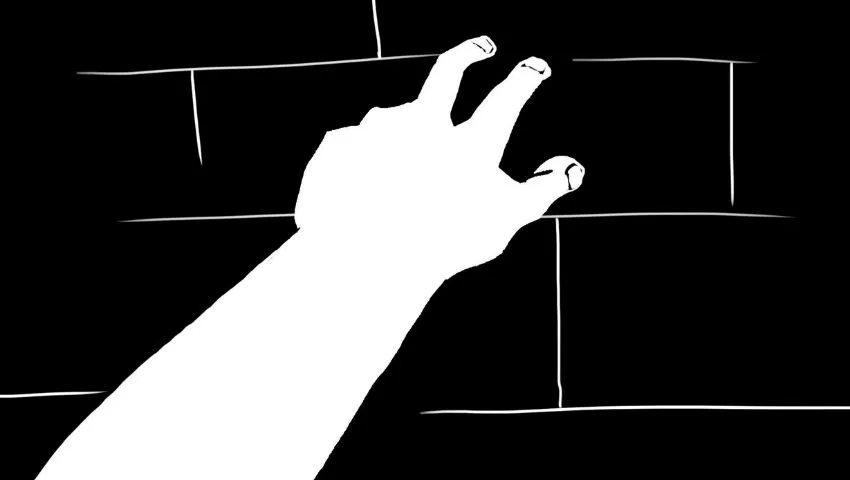
Space is such an important factor in art; for this reason, it is counted as one of the seven elements of art.
Artists use space to project their creative ideas in a piece of art.
However, positive space and negative space in art are interpreted differently.
Space is used to create a balance between objects.
Illusions such as distance, depth, and perspective will not be possible without the use of space.
- What Is Balance in Art
- Adobe Creative Residents Share Tips You Need to Know in this Interview
- How Do You Be Creative?
- List of Artistic Skills Every Creative Should Know
- 10 Unique Tips to Get Over A Creative Block
What are the Several Ways of Using Space in an Artwork?
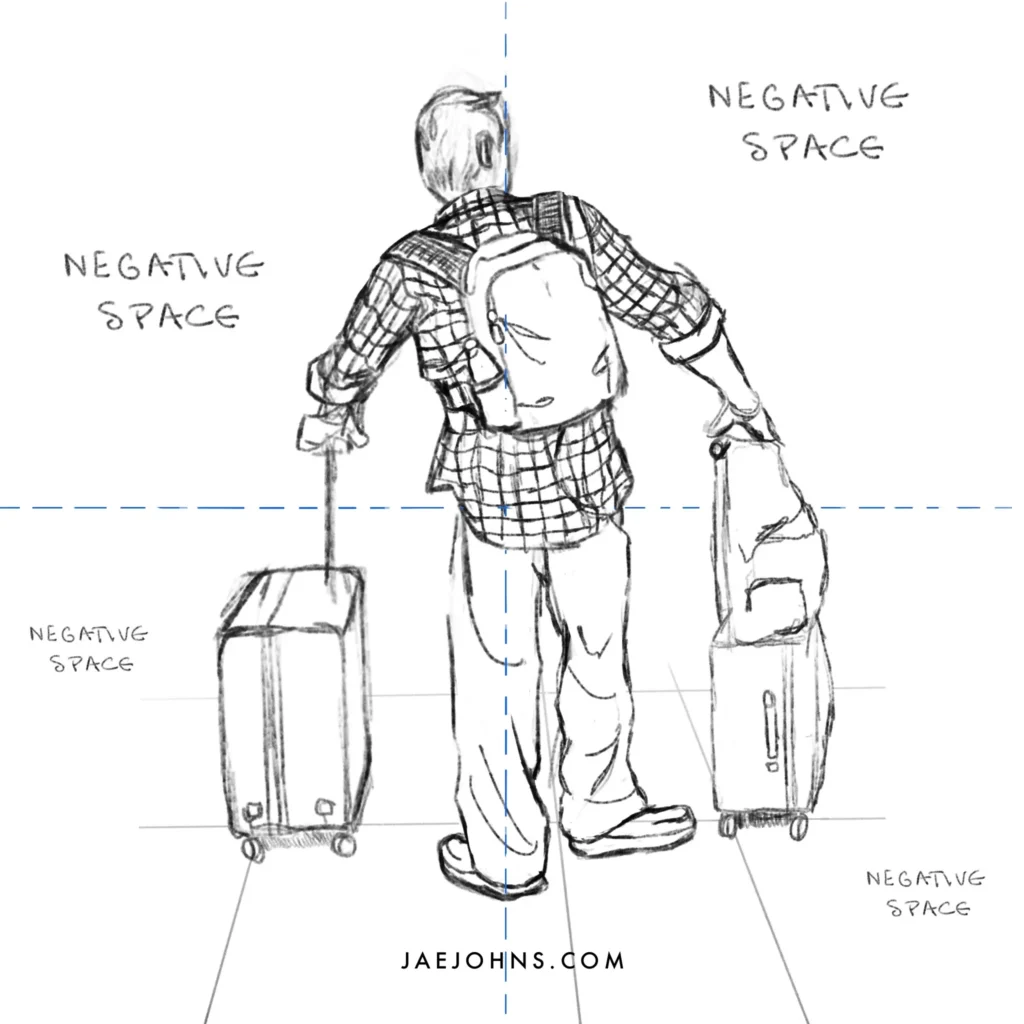
There are various ways by which you can use space in your paintings.
For example, positive space, negative space, 2D (two dimensional) space, and 3D (three-dimensional space).
What is Positive Space in Art?
Positive Space refers to the space occupied by an actual object in the art including line, shape, or color.
In other words, the subject of an artwork is said to be a positive space.
It occupies an important part of the composition and can occur in two-dimensional or three-dimensional art.
Positive space can be anything but that should be the main focus of the painting.
For example, if an artist has drawn an apple, then it would be a positive space.
Moreover, a flower, a house, mountains, hills, buildings, plants, a candle, or an animal in the painting – all can be referred to as the positive space because that is forming an area of interest in the artwork.
If positive space is used skillfully in artwork, your art can add interest to the viewer’s eye.
What is Negative Space in Art?
On the other hand, Negative Space (an opposite of positive space) can be defined as an empty space present between or around the objects, shapes, or forms in an artwork.
In other words, it is said to be the unoccupied area that is surrounding the subject matter.
The space in the background that is not noticeable at first is also said to be the negative space.
It can flow in every direction between or around the objects.
The negative space is used to define the object in the artwork.
It can be created by the edges of the positive space.
Instead of creating an artwork too crowded, artists deliberately create negative space in their paintings as negative space has weight and mass.
When the space around the subject forms a particular shape, negative space becomes even more visible.
Like positive space, the negative space may also occur in two-dimensional and three-dimensional art.
As this type of space has boundaries, it may also function as a shape in the complete pictorial structure.
Want to know an interesting fact about negative space?
Artists create negative spaces in their artwork so that the viewers can seek hidden images present in the negative space.
The best example of positive and negative space can be illustrated through Rubin’s vase.
The space that the vase occupies is said to be a positive space.
Here, the area in black or the individual letter creates a positive space.
The space around the vase (black in color) is a negative space that shows the unoccupied area.
As negative space becomes more visible when the space around the subject forms a shape, hence in this example, negative space has formed a shape of two men facing each other.
What is the Importance of Positive and Negative Space in Art?

Both positive and negative spaces play a crucial role in creating a perfect piece of art whether it is traditional art or digital art.
Basically, both these types of space complement each other.
Positive space impacts the reading of the negative space and vice versa.
Positive and negative spaces are mostly present in abstract works.
At times, it becomes difficult to distinguish positive and negative space from each other.
By getting to know about positive and negative space in art, you can get a better understanding of the meaning of an art piece.
The reason is they are extremely important factors to be considered in a good composition.
To add interest to your composition, it is important to create a balance between positive and negative space.
By doing so, the viewer will desire to invest more time looking at your artwork.
In short, a good design always has a positive and negative space.
Note: Most people think that positive space is represented by light color and negative space by dark color.
This is not always the case in every piece of art.
For example, if an artist has drawn black glass on a white canvas, the dark color (black glass) will represent positive space and light color (white canvas) will depict negative space.
Open Spaces
Open spaces are usually present in two-dimensional or three-dimensional forms of art.
They refer to the empty part of the subject.
Example of open space used in 2D art:
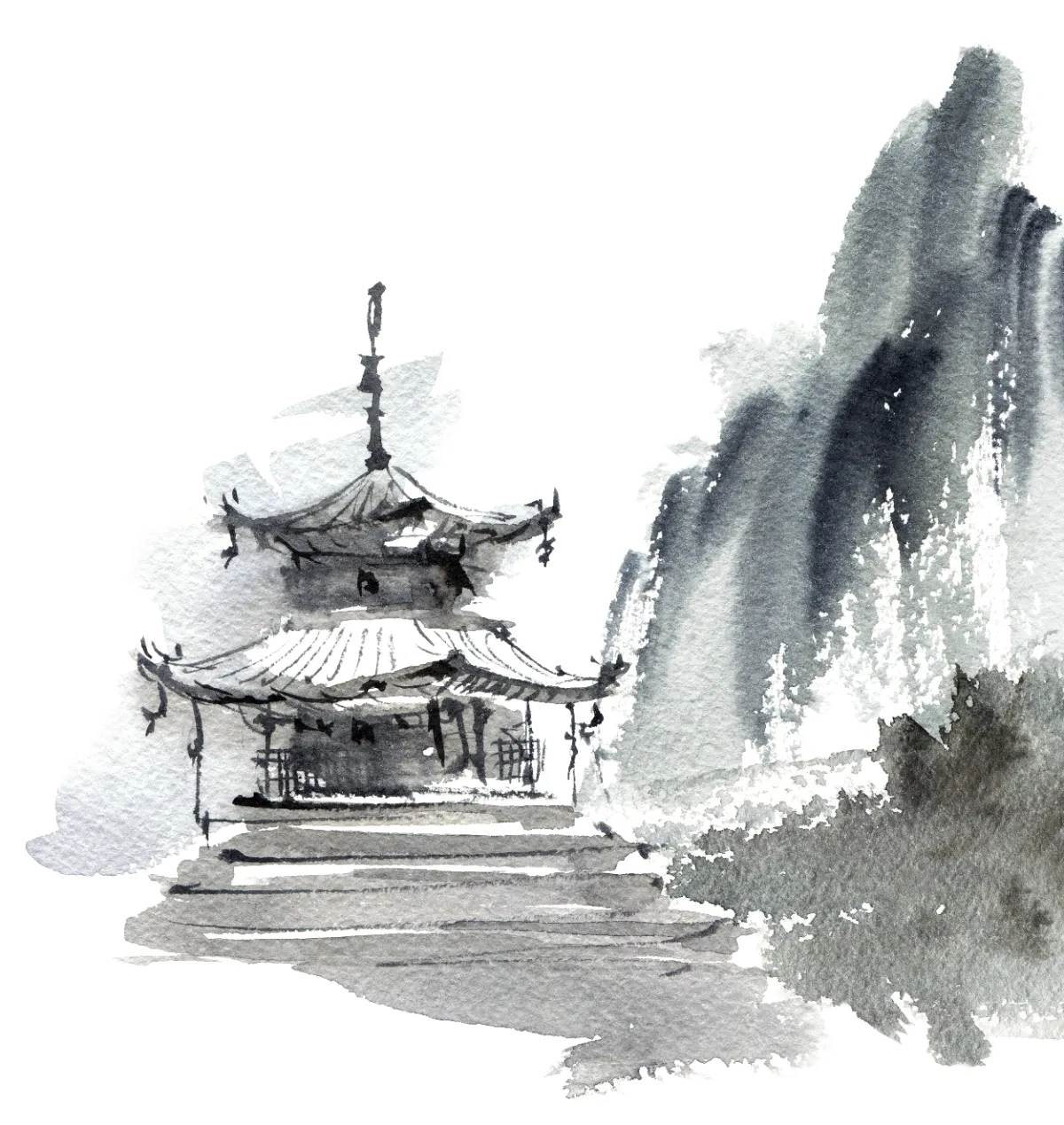
The landscape paintings by Chinese painters depict open space as negative space.
These paintings are usually made with black ink with a large area in white.
Consider a popular “Landscape in the Style of Yan Wengui”.
The whole painting is made in black color and is showing an atmospheric perspective to show a recession in space.
Other examples of open space include:
- “Monk by the Sea” by Caspar David Friedrich
- “Geese over a Beach” by Maruyama Okyo
- “Isola Bella in Lago Maggiore” by Sanford R. Gifford
- “Christina’s World” by Andrew Wyeth
How open space is used in 3D art – Example:
Outdoor sculpture by Henry Spencer Moore (a renowned English artist) is the perfect example of open space.
This sculpture also relies on the interplay between positive and negative areas.
In this artwork, there is a metal sculpture that has holes in the middle.
These holes are depicting the negative space in the artwork.
Back in the year 1938, Henry Moore made another abstract sculpture of a woman lying down.
This sculpture is known as Recumbent Figure.
Open spaces were used in this freeform sculpture by Henry Moore.
What is Two-Dimensional and Three-Dimensional Space?
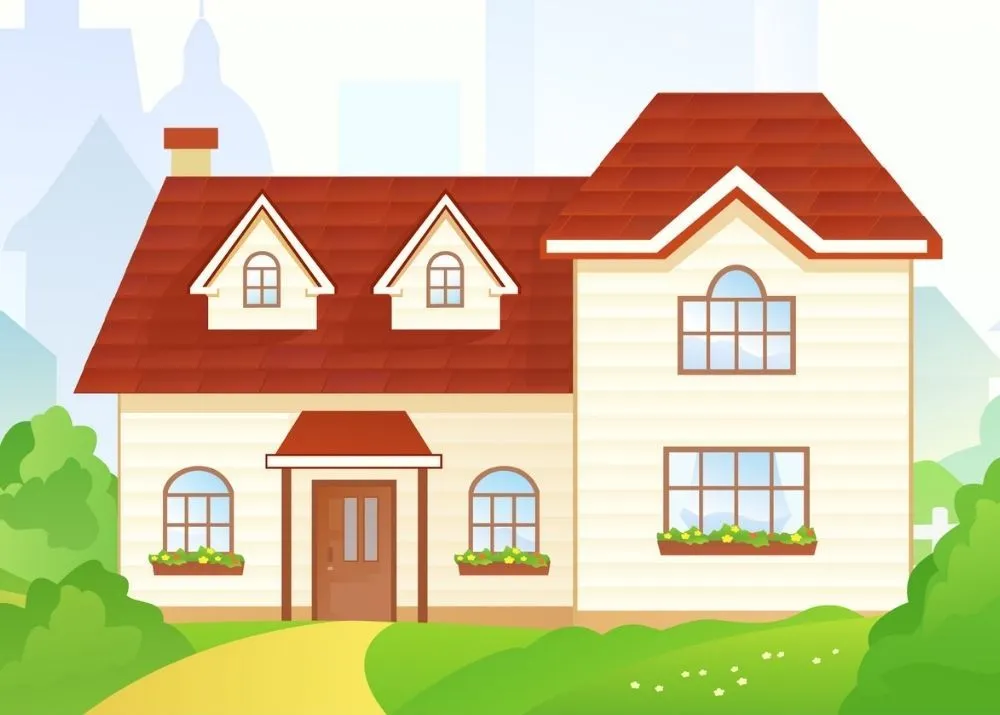
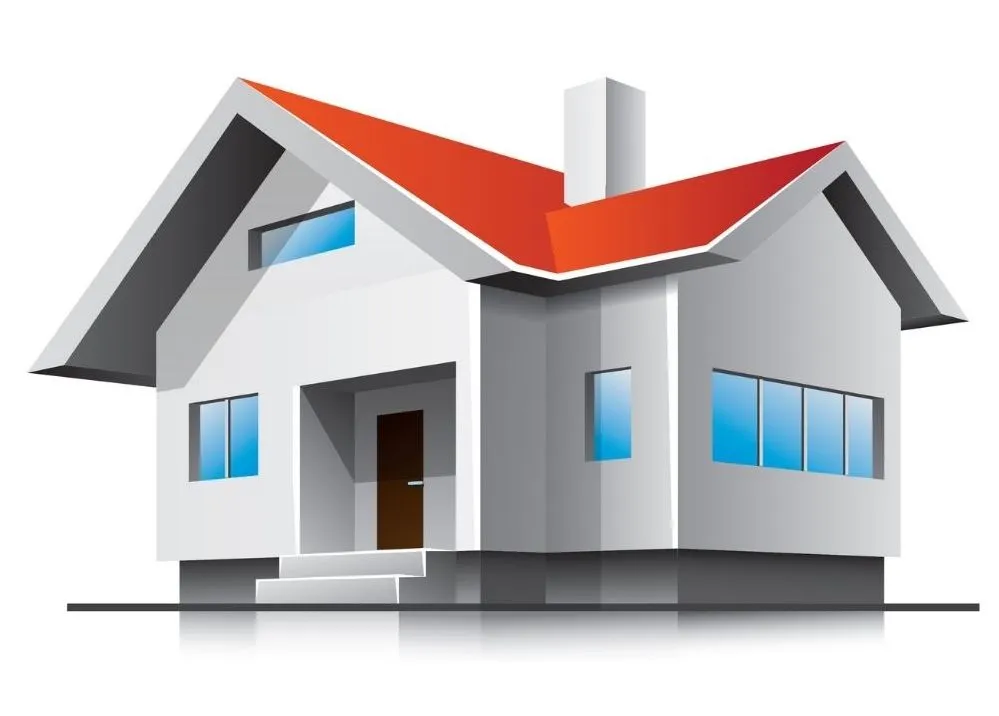
Two-dimensional and three-dimensional space are also very important in art.
2D space refers to the space or the distance on the surface.
Such a type of space shows length and width but depth or thickness cannot be shown through 2D space.
Positive and negative space, scale, linear perspective, and overlapping shapes – all these principles can manipulate special illusions in two-dimensional art.
There are a variety of artworks in history that show space using the concept of overlapping.
These include the Library by Jacob Lawrence, Man on a Bench by Horace Pippin, and South Beach Bathers by John Sloan.
On the other hand, 3D space creates visual or real depth because it shows length, width as well as height.
What is the relationship between Space and Perspective in Art?
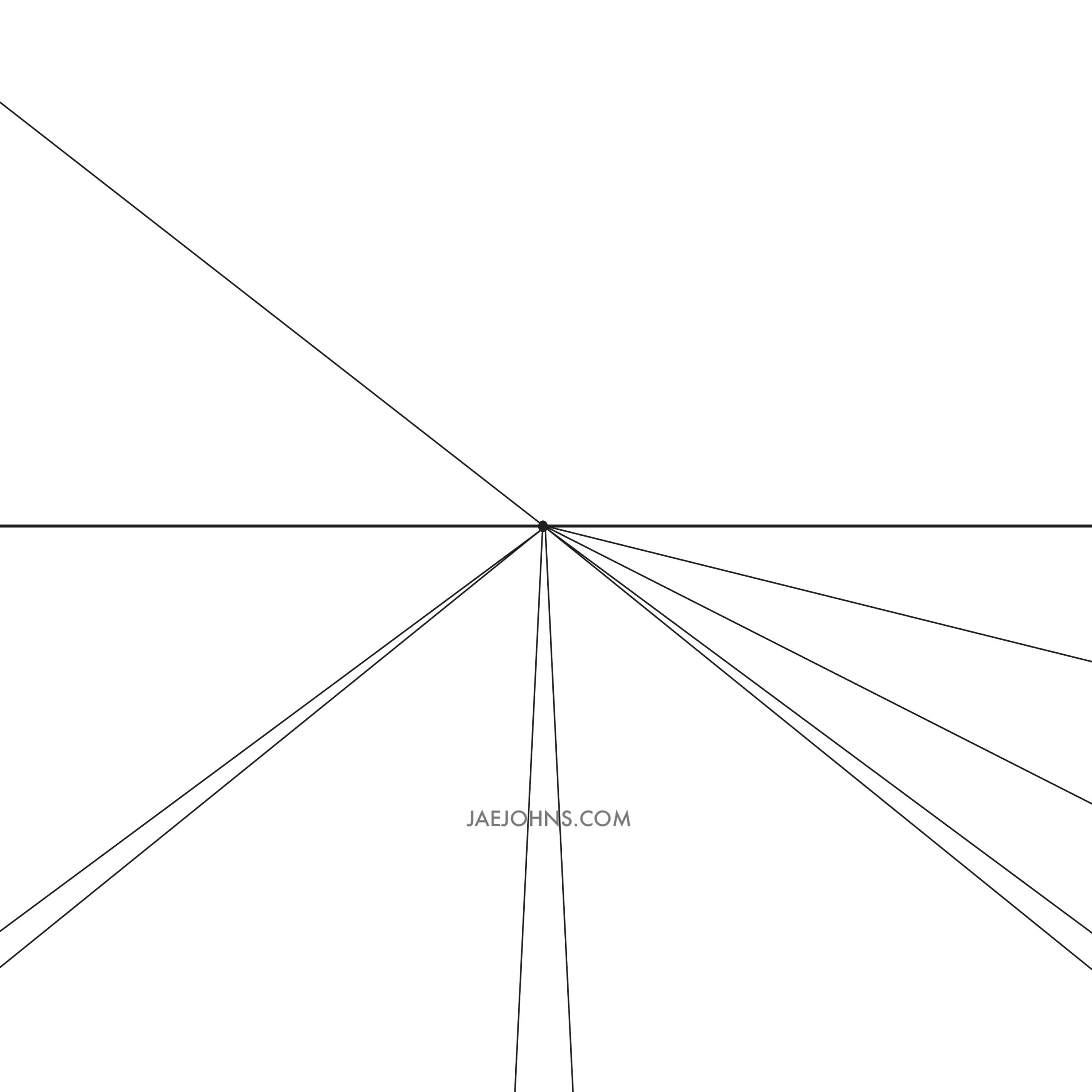

A drawing method that uses lines to create the illusion of space is known as a linear perspective.
Linear perspective is a way of creating space in art.
Most scenes in paintings are made three-dimensional by using space, no matter whether it is positive space or negative space.
Most artists use size to depict the relationship between space and perspective in the drawings.
For example, consider a drawing in which a tree is bigger because it is in the foreground.
To show that the mountains or plants are at a distance from the tree, they are made smaller than the tree.
Hence, in such a type of drawing, size is used not only to create perspective but also to show space in the artwork.
Moreover, in such drawings, the scale also enables artists to manipulate the proportions.
An American painter, Thomas Hart Benton, was known for showing ordinary people doing common things.
In his paintings, he used to draw landscapes, busy cities as well as people working in factories.
One of his famous paintings is Spring Tryout.
Spring Tryout creates a relationship between space and perspective.
In this painting, Thomas Benton has created negative space in the sky to add perspective to the painting.
Other examples of artworks that show space using linear perspective include:
- “The Road West” by Dorothea Lange
- “School of Athens” by Raphael
- “Last Supper” by Leonardo da Vinci
- “Ideal City” by Piero della Francesca
- “A Summer Shower” by Edith Hayllar
Other Ways for Showing Space in Art
Remember, the space in art cannot only be created through a linear perspective but there are other ways as well by which an illusion of space can be created on a 2D surface.
These include:
- Size: Through size, space can be depicted by drawing the objects larger that are closer to us than the objects farther away.
- Overlapping: By overlapping one object over the other, the viewer can have an understanding that the thing on top is closed. If no overlapping is shown, the painting would be flat without a realistic sense of depth.
Other strategies of showing space include placement on paper, color, detail, value, proportion, clarity, etc.
What is Shallow Space in Art?
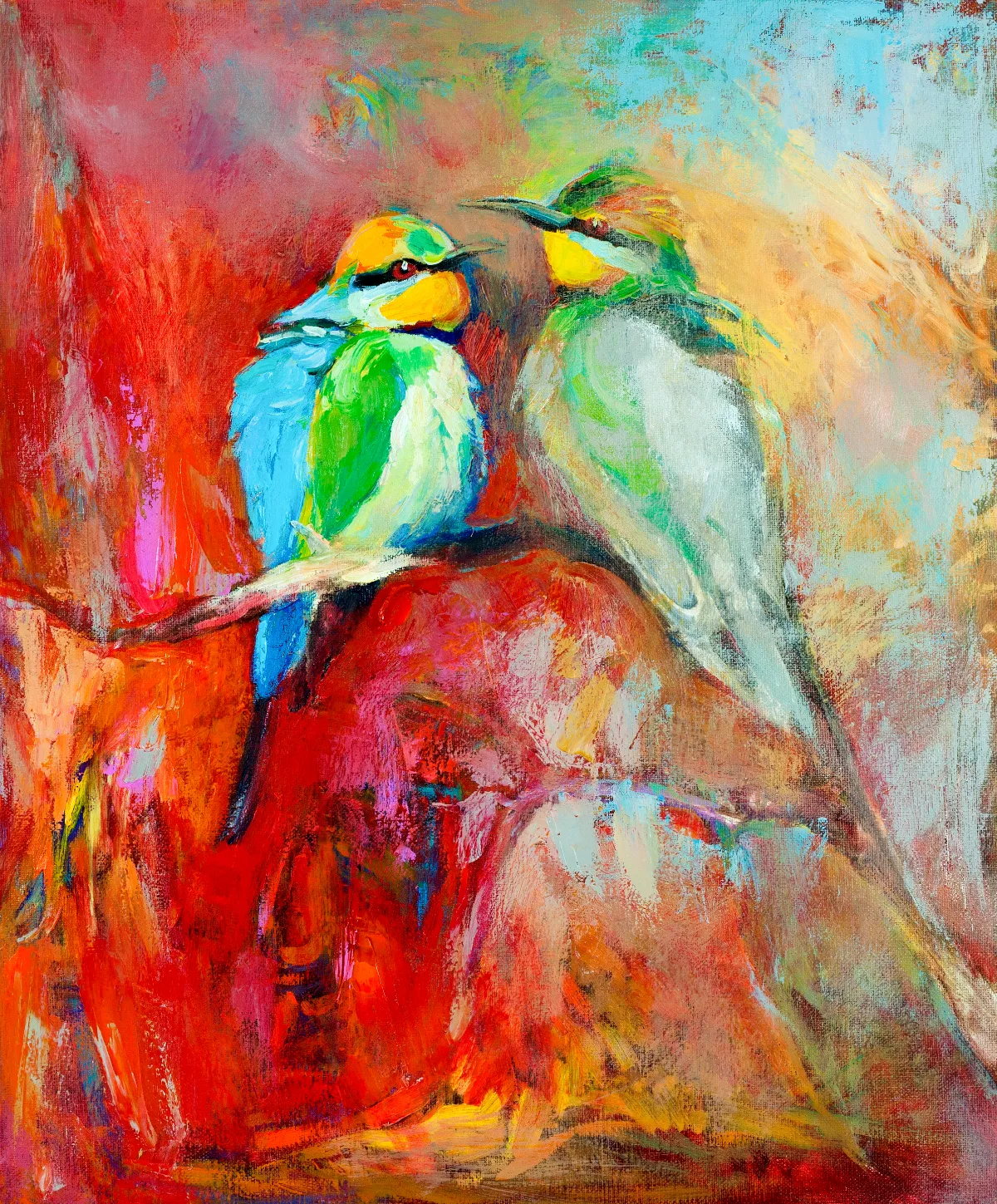
Shallow space in art refers to a space that is identified by its length and width but does not clearly show depth.
It is a 2D flat space that does not show a clear relationship between the viewer and the object in view.
It is used in a two-dimensional artwork but cannot provide the deep view as demonstrated in an illusion of three-dimensional space.
What is Ambiguous Space in Art?
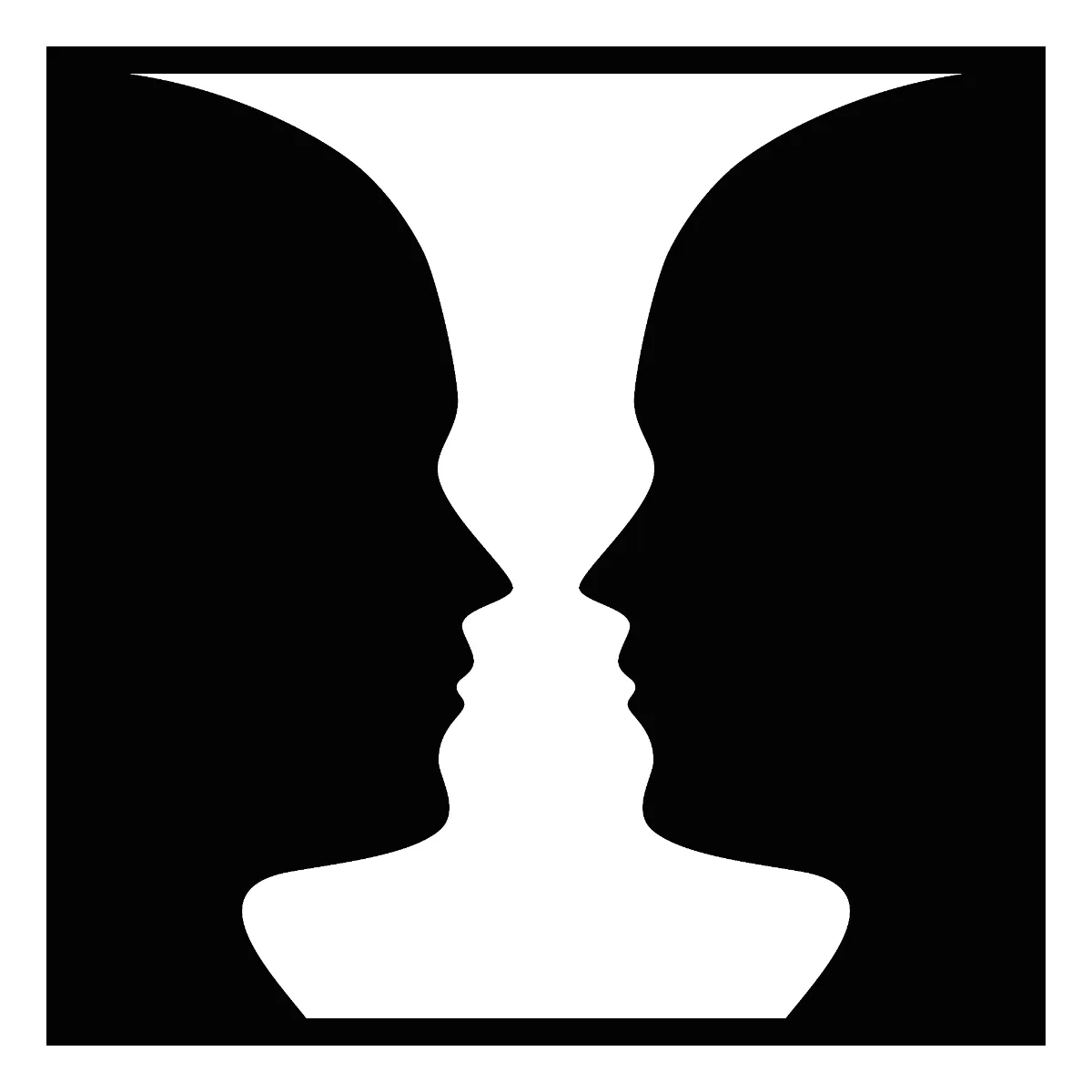
An Ambiguous Space in Art is a space that cannot be clearly defined as a positive space while at the same time it cannot be said to be a negative space.
It is neither here nor there, but the viewer can perceive it as either positive or negative depending on their point of view.
Is Negative Space Black or White?
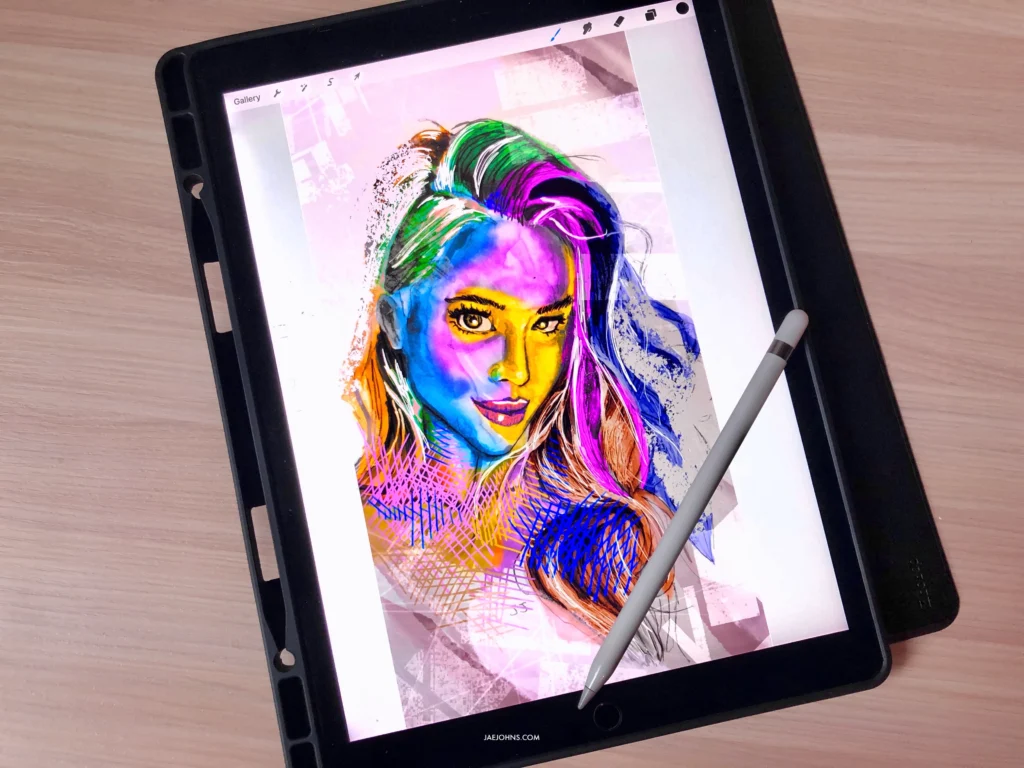
Negative space is not identified by black or white but is part of the components of a piece of art.
Negative space is used in the background to project abstract pieces.
For instance, in a portrait painting, negative space forms the background while the positive space captures the person’s face in the foreground.
Conclusion
As important as it is, the use of space can easily be overlooked by some artists but that will be shallow.
The negligence of this important factor in the art could result in cluttered images with less detail.
Creating space in a work of art is not hard, but understanding it and applying it will help you build a strong art foundation in natural forms.
Space in Art FAQ
What is the definition of space in art?
It’s all about making a flat surface look like a 3D world. Artists use color, shape, and texture to control the way the viewer’s eye moves through the piece (and create a sense of depth). And, not just a dream—space can also be used to convey emotions and set the mood. Basically, it’s a major key to making awesome art.
How is space used in art?
Space in art is all about making a flat surface like a 3D world and giving the piece some serious depth. Artists use it to control where the viewer’s eye goes, set the mood, balance things out, and make their work way more impactful. It’s a major part of the creative process.



Utivius
Monday 21st of December 2020
This was extremely helpful, and the art pieces helped to reinforce your teaching. Thank you!
jaejohns
Wednesday 23rd of December 2020
Glad it helped. You're welcome!